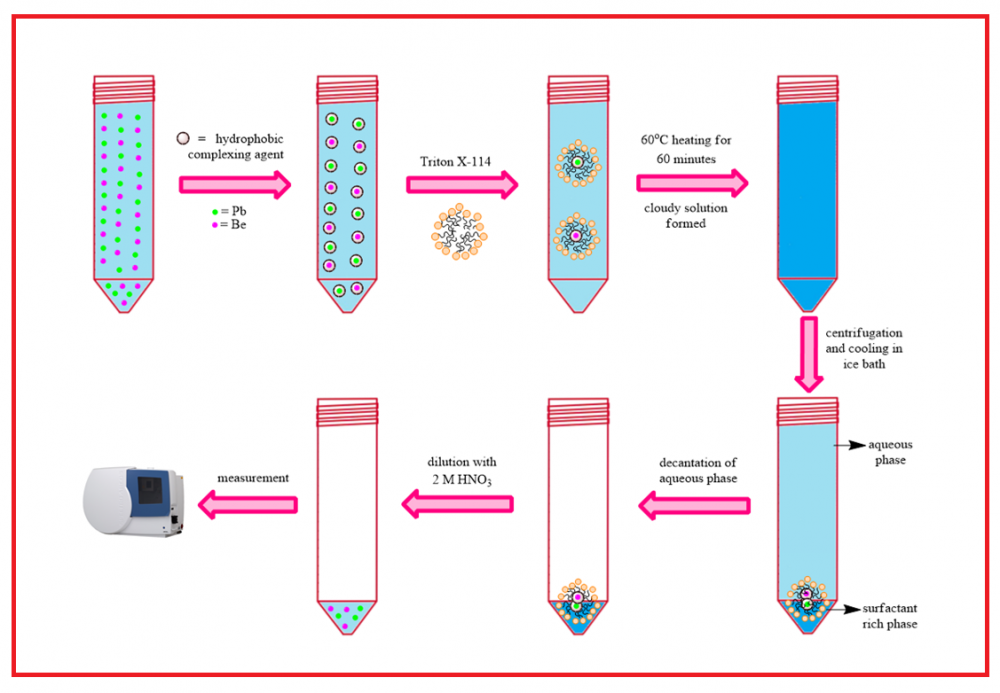JOURNAL 3183
Journal of Chemical Metrology
Year: 2024 Issue: 1 January-June
p.71 - 82
Viewed 1831 times.
GRAPHICAL ABSTRACT

ABSTRACT
Today, high amounts of boron waste are generated due to the widespread use of boron and boron compounds. Boron waste in boron-producing enterprises in Türkiye reaches six hundred thousand tons annually. The utilization of boron wastes includes various stages, such as storage of refuse in appropriate places, recovery of boron from boron wastes, and utilization in proper sectors. In this study, the amounts of lead (Pb) and beryllium (Be) in three different boron samples (boron waste, boron ore, and processed boron ore) obtained from Kütahya-Emet region were determined by ICP-OES spectroscopic technique by cloud point extraction (CPE) method using 4-sulfamoylphenyl dithiocarbamate salt complexing agent. Colemanite was used as a boron ore in the study. According to the results, the optimum conditions for the recovery of lead and beryllium ions from aqueous media were found as pH=9, 0.12% (w/w) ligand, and 0.1% (w/w) surfactant concentration, 45 oC incubation temperature and 60 min incubation time. The RSD % of the method under the optimum conditions found were 2 and 2.5 for Pb2+ and Be2+, respectively. The procedure was successfully applied to boron waste samples, and Pb2+ and Be2+ recoveries between 96-105% were obtained.
KEYWORDS- Boron waste
- boron ore
- processed boron ore
- 4-sulfamoylphenyl dithiocarbamate salt
- ICP-OES
- cloud point extraction